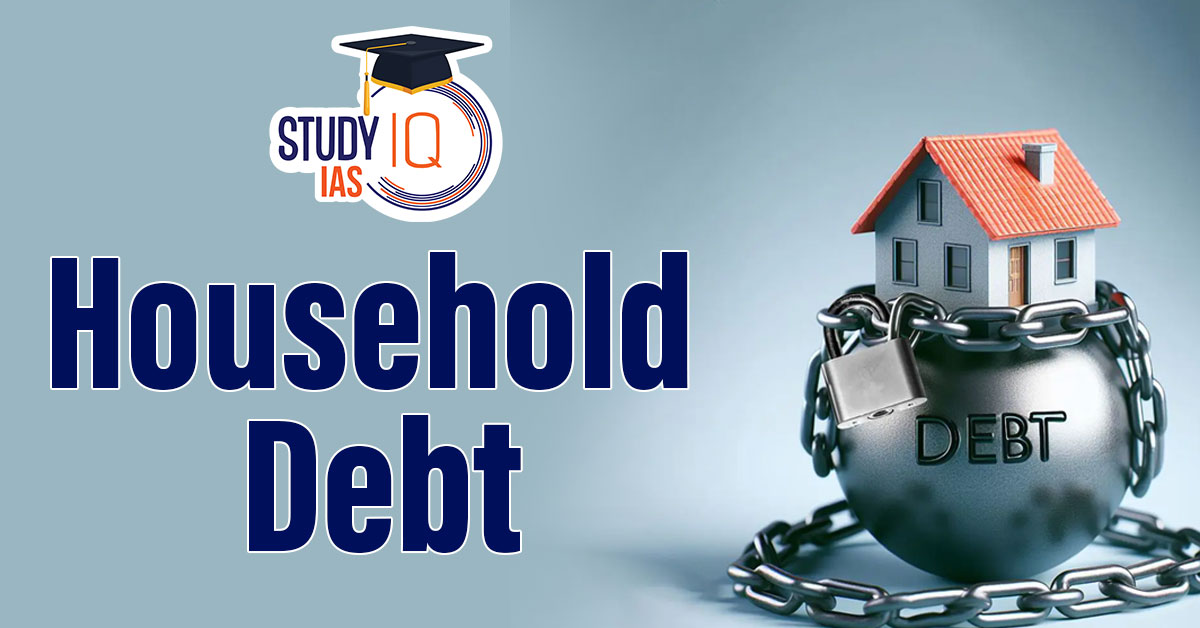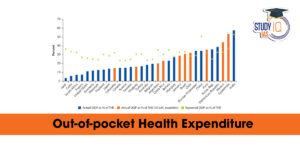Table of Contents
Context: Household debt has surged dramatically in the years after the pandemic.
Trends in Household Debt
Rapid Growth Post-Pandemic
- Household debt rose from 6% of GDP in June 2021 to 42.9% in June 2024.
- Historically, it hovered around 33% between 2015–2019.
Widespread Across Income Segments
- Credit growth is not limited to affluent groups — even low-income households increased borrowing.
Sharp Rise in Personal and Unsecured Loans
- Banks’ personal loans grew by 75% (Mar 2021–Mar 2024).
- NBFCs and HFCs’ retail credit rose by 70%.
- Unsecured personal loan books grew sharply: Banks: 82%, NBFCs: ~130%.
More Loans, More Borrowers
- High number of live loans: Many borrowers have 3+ loans.
- 11% of borrowers with small-ticket personal loans (<₹50,000) are overdue.
- Borrowers with 4+ active loans are nearly at 6%.
Underlying Causes for Rising Household Debt
- Inadequate Income Growth: Between Mar 2021–Mar 2024:
- Disposable income grew by only 43%, vs credit growth of 70–75%.
- Consumption rose by 49%, indicating credit was used to bridge the gap.
- Low Job Creation and Wage Growth: Structural issues in employment and productivity are forcing households to borrow to maintain living standards.
- Pandemic Aftermath: Households turned to borrowing during and after COVID-19 to sustain consumption.
- Easy Availability of Credit: Aggressive lending by NBFCs, MFIs, and banks, especially in unsecured segments.
- Failed or Ineffective Initiatives:
- RBI’s Temporary Tightening (Nov 2023): Raised risk weights on consumer credit and bank exposure to NBFCs.
- Impacted credit growth but was short-lived due to concerns about slowing consumption.
- RBI’s Temporary Tightening (Nov 2023): Raised risk weights on consumer credit and bank exposure to NBFCs.
Impacts of Rising Household Debt
- Reduced Future Consumption: Larger debt servicing eats into disposable income, reducing the ability to spend.
- Higher Defaults & Stress Signs: Rising delinquencies in NBFC portfolios: gold loans, vehicle loans, unsecured credit.
- Increasing write-offs by banks of retail unsecured loans.
- Overdependence on Credit-Driven Growth: Private consumption is being artificially propped up by credit, not income.
- Financial Vulnerability in Low-Income Groups: Poorer households rely more on unsecured loans for essential consumption, leading to greater financial fragility.
What Needs to Be Done
Short-Term Policy Measures
- Calibrated Monetary Easing: Rate cuts + liquidity easing to be paired with caution on unsecured credit expansion.
- Strengthen Credit Monitoring: Tighten norms on multiple lending by MFIs & NBFCs.
- Improve Financial Literacy: Awareness of responsible borrowing and debt management.
Medium to Long-Term Structural Measures
- Enhance Income Growth: Focus on employment-intensive sectors (manufacturing, MSMEs, services).
- Encourage formal job creation.
- Regulate Informal Credit Channels: Expand RBI oversight over NBFC-MFIs and introduce better credit risk profiling.
- Credit-Linked Asset Building: Redirect credit toward productive use: education, skill development, entrepreneurship.
- Revamp Social Security Nets: Ensure basic income support and employment guarantees reduce credit dependency.


 Out-of-Pocket Health Expenditure, Reason...
Out-of-Pocket Health Expenditure, Reason...
 Treasury Bills (T-bills): RBI Cuts Holdi...
Treasury Bills (T-bills): RBI Cuts Holdi...
 Fisheries Sector in India, Current Statu...
Fisheries Sector in India, Current Statu...

























